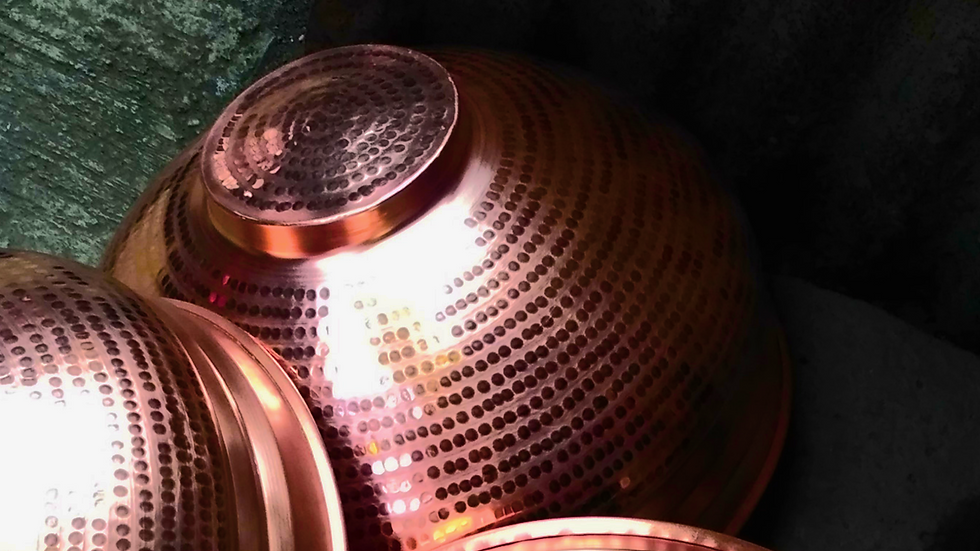
Ergonomic Redesign for Traditional Coppersmiths in Pune :
A UX Approach to Enhancing Artisanal Workspaces
Purpose

Problem Overview
The traditional coppersmiths of Tambat Ali, Pune, endure severe physical strain from outdated, uncomfortable workstations, putting them at risk for long-term health issues, particularly musculoskeletal disorders.This not only affects their well-being but also threatens the continuation of their craft.
Purpose
My Role
UX Researcher & Designer – field research, ergonomic evaluation, conceptual ideation, prototyping, and testing.
This was a collaborative group project with four team members: Shreya Sinha, Nishad Ghodke, Aarohi Singhal, and Swarali Natekar.
Duration
6 Weeks
Tools & Methods
REBA, WERA, Field Observations, Ethnographic Research, Prototyping, CAD
Challenge
Traditional coppersmiths in Pune face serious ergonomic challenges due to outdated workstations, leading to health risks such as chronic back pain, tendinitis, and vibration-related disorders. Generational knowledge has not translated into improved working conditions, impacting both their health and productivity. Addressing these issues is vital for their well-being and the preservation of their craft.
Problem
“Our backs hurt, our fingers go numb, but we have no choice — this is how it has always been done.” — Artisan at Tambat Ali
Design Process
Research & Discovery
Understanding the Problem
Field Research
User Interviews
REBA (Rapid Entire Body Assessment) and WERA (Workplace Ergonomic Risk Assessment)
Define
Problem Analysis
User Personas
Design Requirements
Ideate
Brainstorming Solutions
Low-fidelity Prototypes
Concept Testing
Design
Prototype and Evaluate
Research
Methods Used
Field Observations in active workshops
Interviews with 10+ artisans
Ergonomic Tools
REBA: Avg Score = 10 (High Risk)
WERA: Avg Score = 42 (Requires Change)
Key Pain Points
Prolonged static postures
Vibration from hammering
Lack of back/knee support
Awkward seating ("Khod")
Noise, lighting, ventilation hazards
Cultural Insight
The "Khod" is not just a seat—it's tradition. Any design had to preserve this emotional connection.
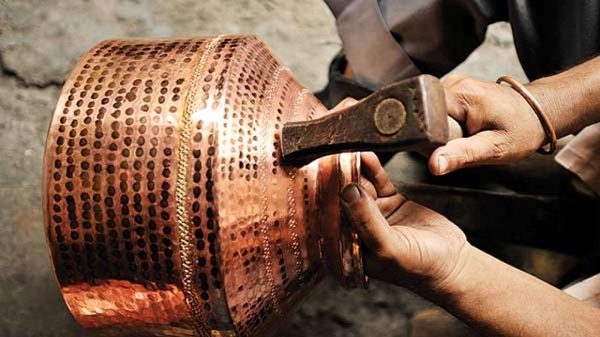
Process of making copper vessel
Katarkaam - copper sheets are cut into the desired shapes for the specific vessel.
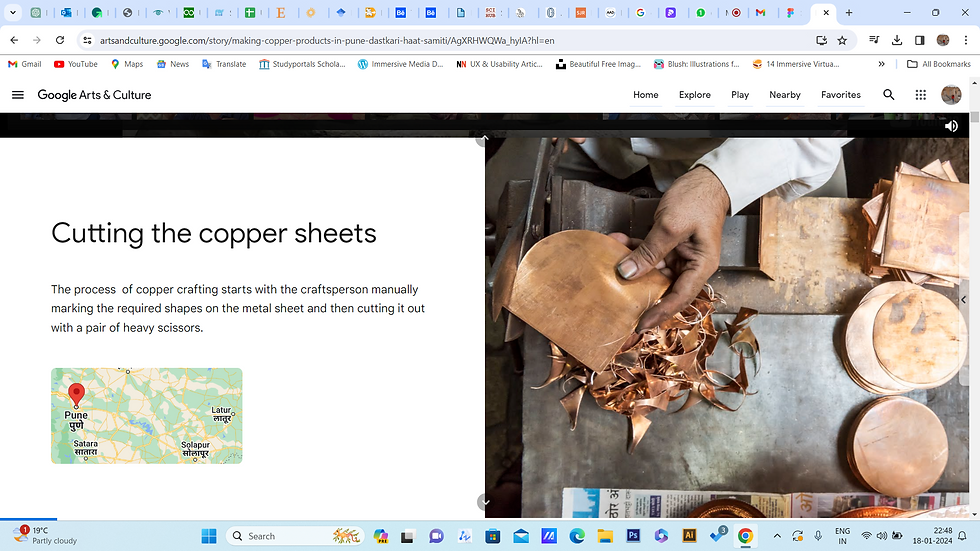
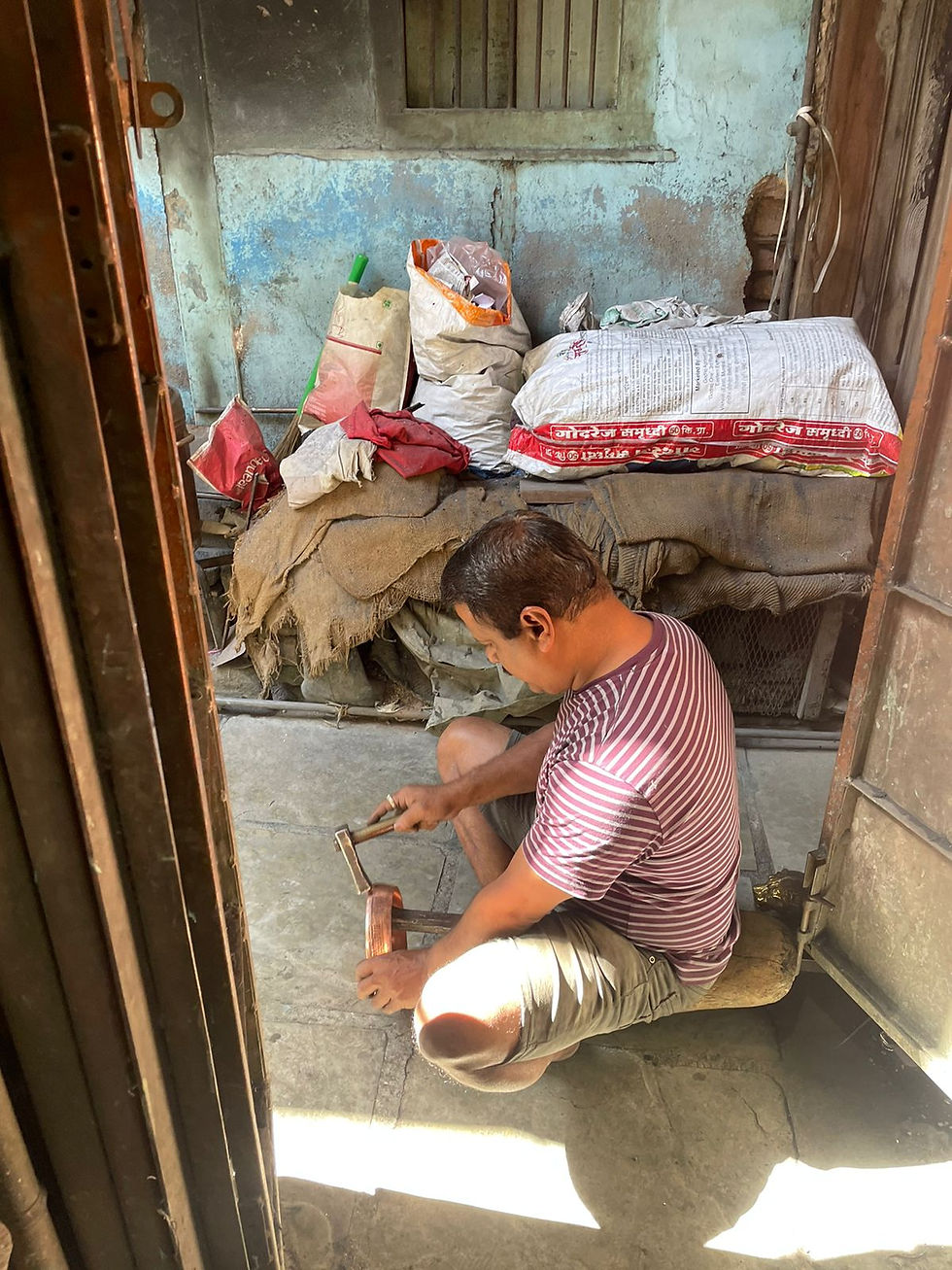
Jodkam and Vijavne- Joining and Brazing forms into components
Jodkam and Vijavne- Joining and Brazing forms into components
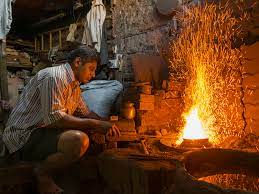
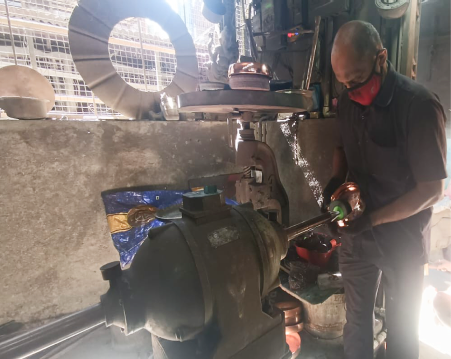


Matharkam- Hammering the surfaces. Art of beating copper vessel to make it strong. It also gives a beautiful texture to the product.
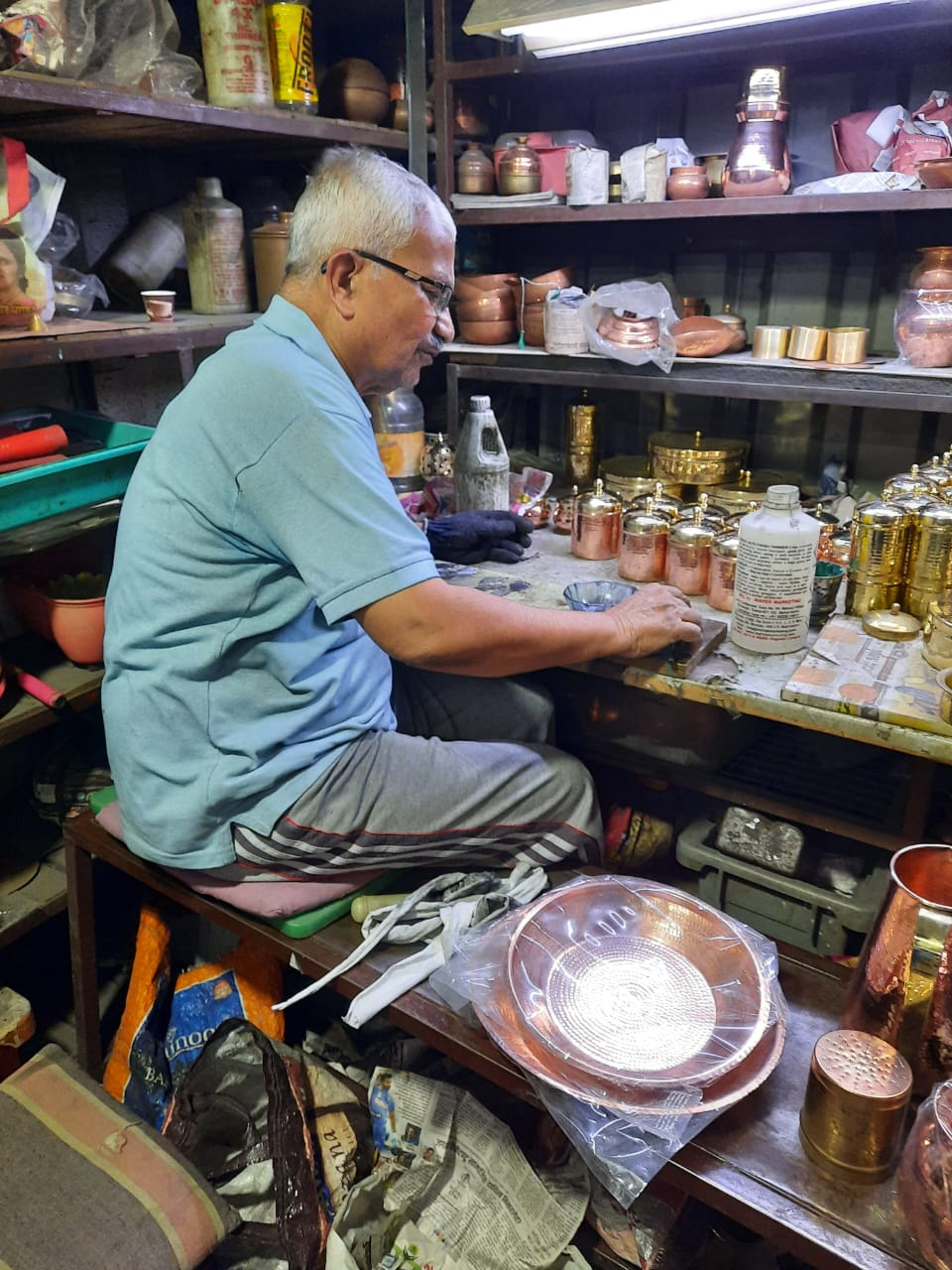


Jadavkam - Buffing and polishing. Accessorizing the components.
Physical Model
Main Entry
Markham/hammering
Dye cast machine
Markham
Storage
Storage
Storage
Entry
Buffing machine
2.5 m
4 m
INSIGHTS
Space Constraints
Postural Discomfort
Noise and Vibration Hazards
Inadequate Lighting
Inadequate Ventilation
Artifact Model
Seat used by artisans
Hammering tools used in matharkaam
Khod(wooden seat)
Kharvai (Iron bar anvil)
Different cross-sections of kharvai, depending upon the vessel’s curve

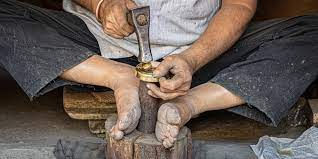
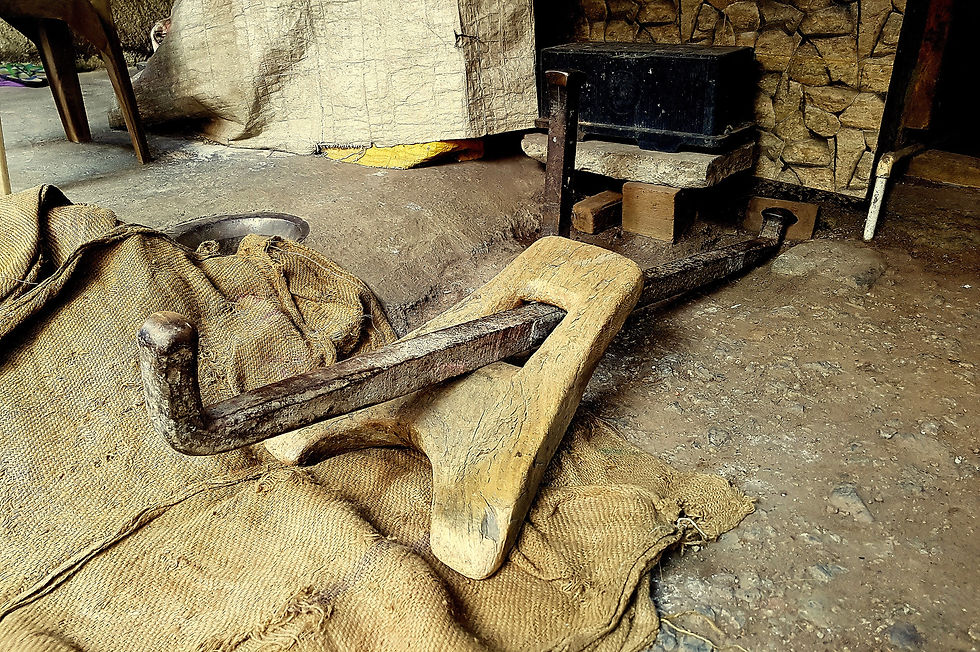


11 cm
3 cm
17 cm
15 cm
15 cm
4.5 cm
110-140cm
11 cm
5.5 cm
Types
44 cm
67 cm
9 cm
21 cm
Insights From Site study

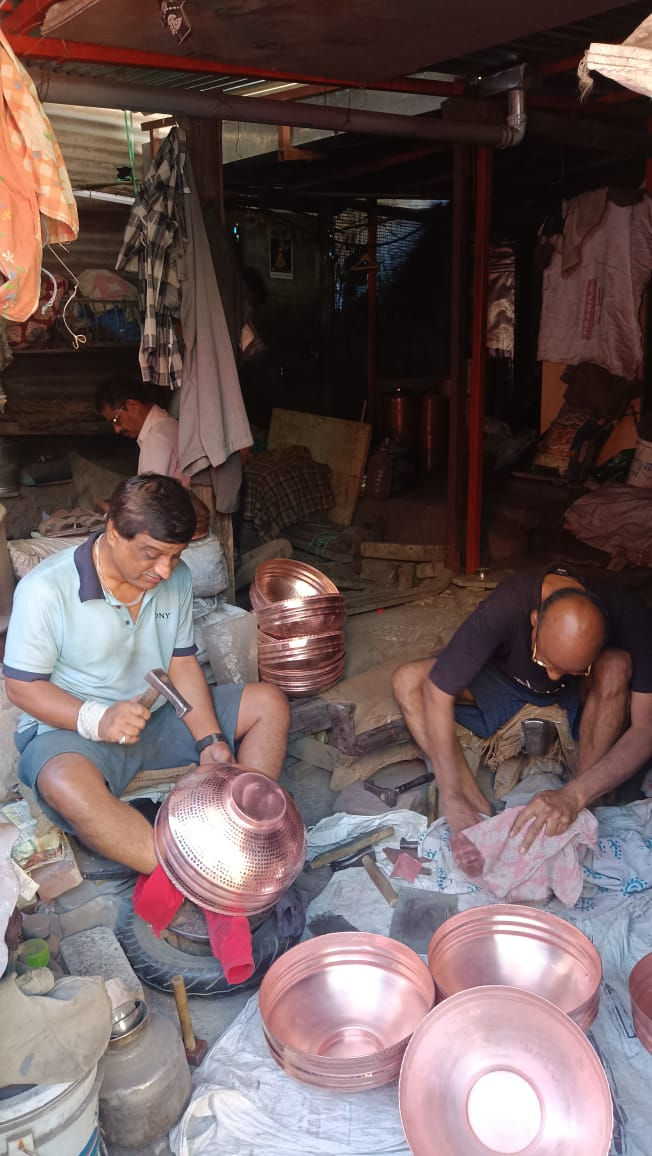
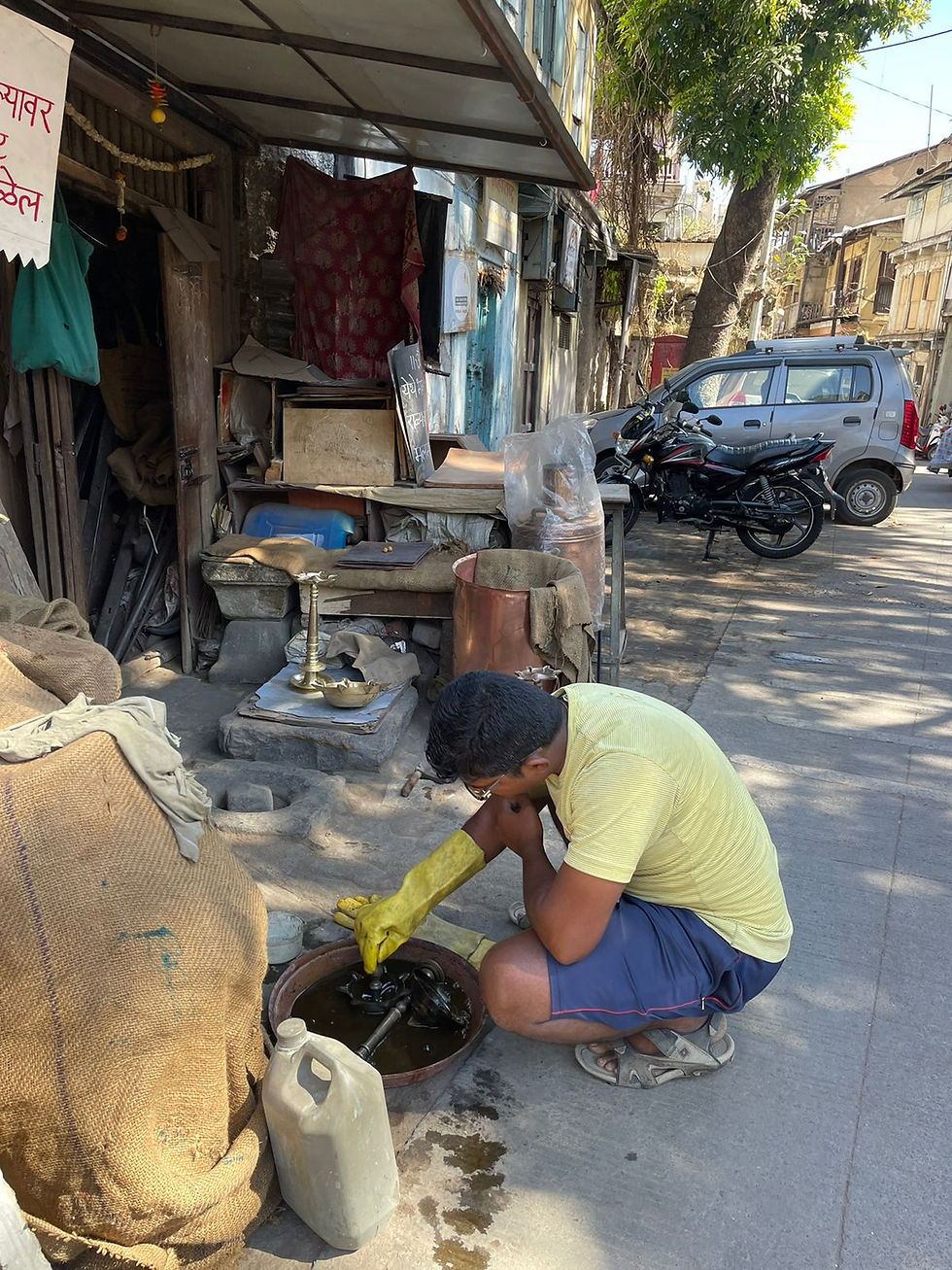

Temperature Extremes- Heat from copper shaping and polishing can lead to thermal stress.
Noise Exposure: Loud hammering sounds pose risks of hearing issues over time.
Vibration Exposure: Prolonged use of vibrating tools, like hammers, can cause discomfort.
Inadequate Hand Protection: Misuse of gloves when handling sharp materials increases the risk of cuts. Thick or ill-fitting gloves hinder the ability to manipulate small copper pieces.
Chemical exposure: Contact with chemicals used in metal finishing can cause skin irritation and respiratory issues.
Improper lighting: Inadequate workstation lighting can strain eyes and impact craftsmanship quality.
Awkward postures: Lack of suitable seating for detailed tasks for prolonged periods can cause fatigue
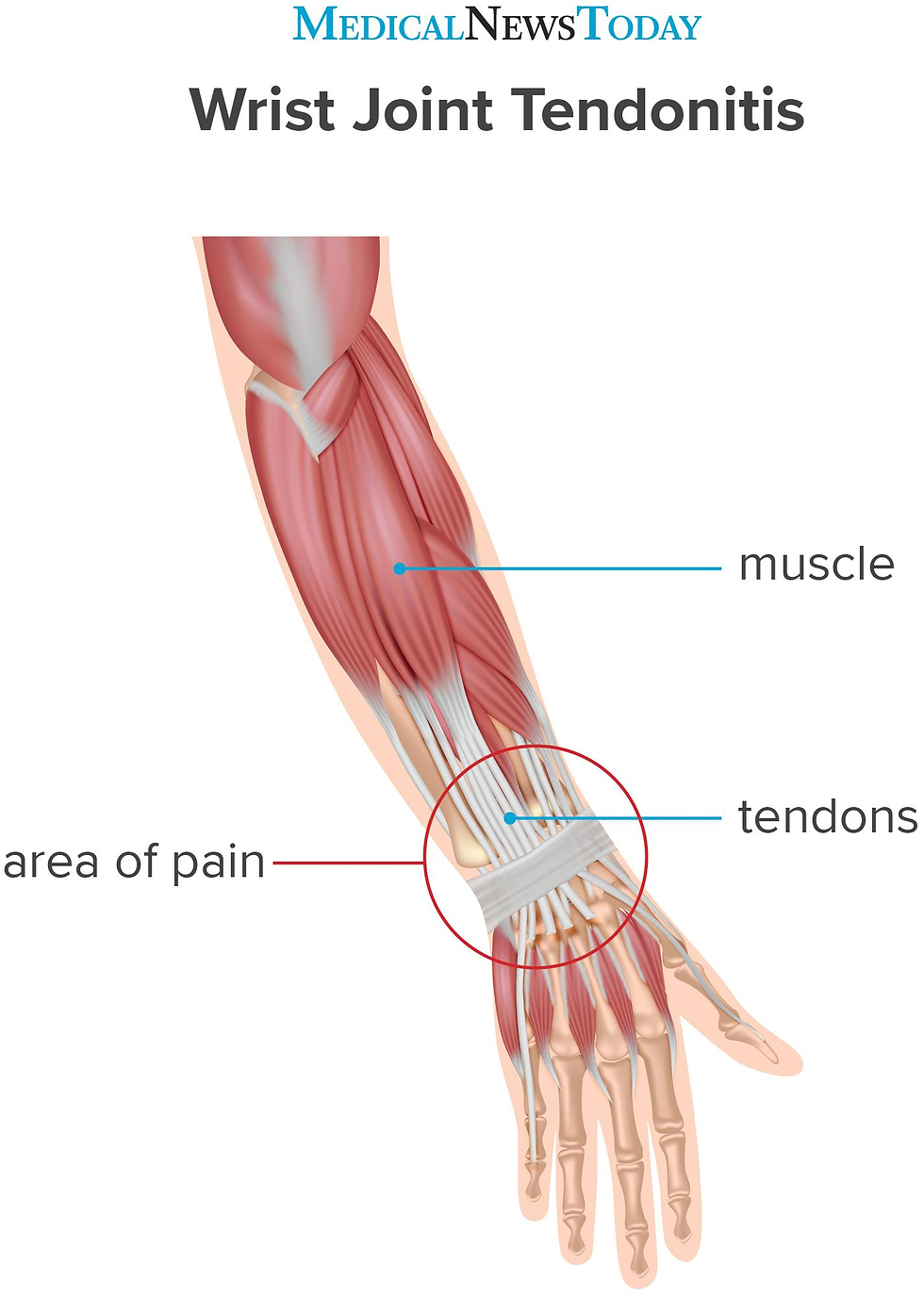



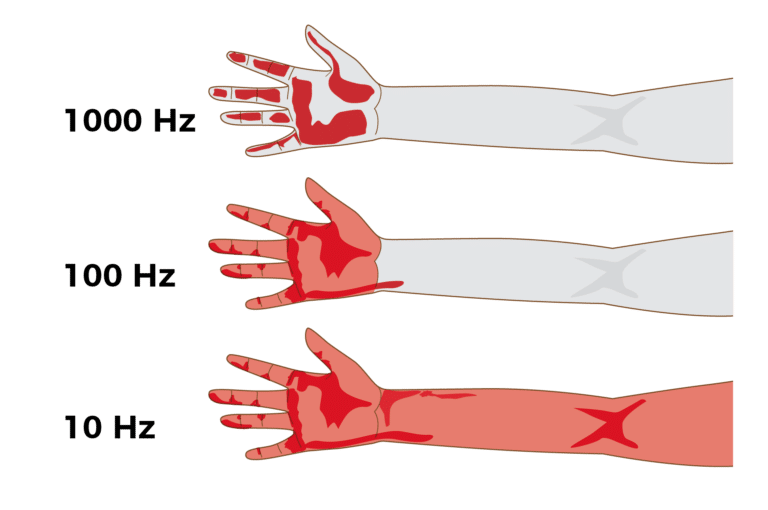

CTS
TENDINITIS
3.Pre Patellar Bursitis
LOWER BACK PAIN
ACHILLES TENDINITIS
HAVS
TRIGGER FINGER/ THUMB
EPICONDYLITIS
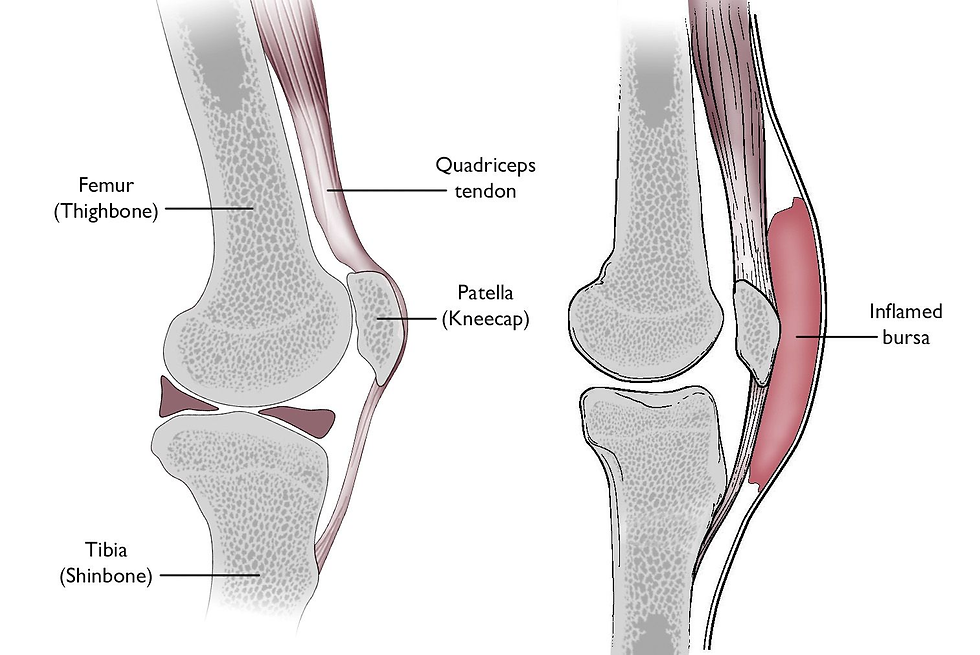
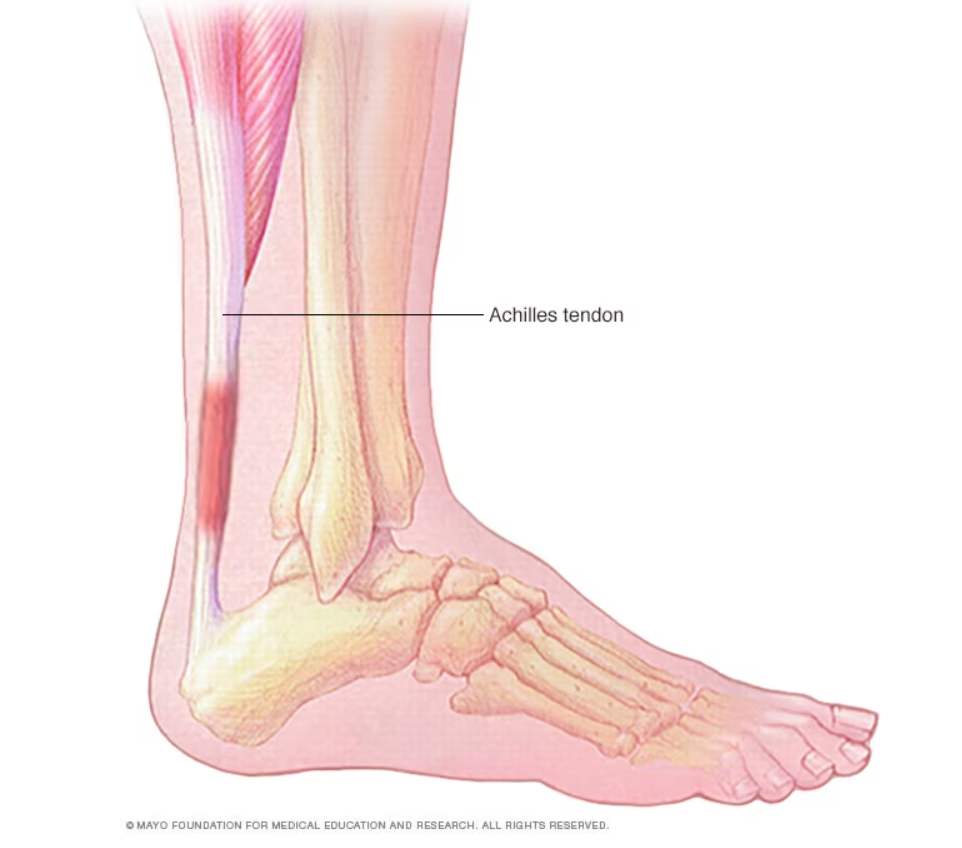
MSD (Musculoskeletal Disorder) SYMPTOMS IN COPPERSMITHS
Design Directions

Respect traditional workflows
Easy to produce and maintain locally
Maintain workspace compatibility

Integrate modern ergonomic support
Ideation & Concept Development
Solution 4- Tool Design
Solution 1- Work desk member
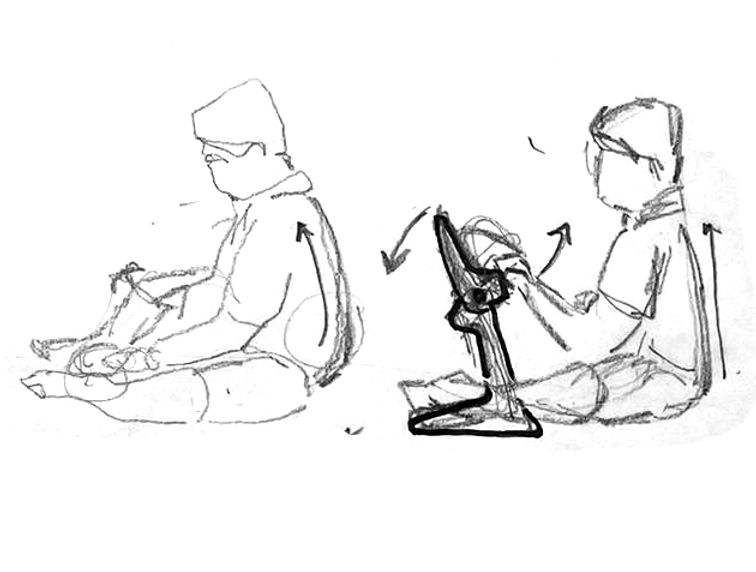
Solution 2- Elbow support
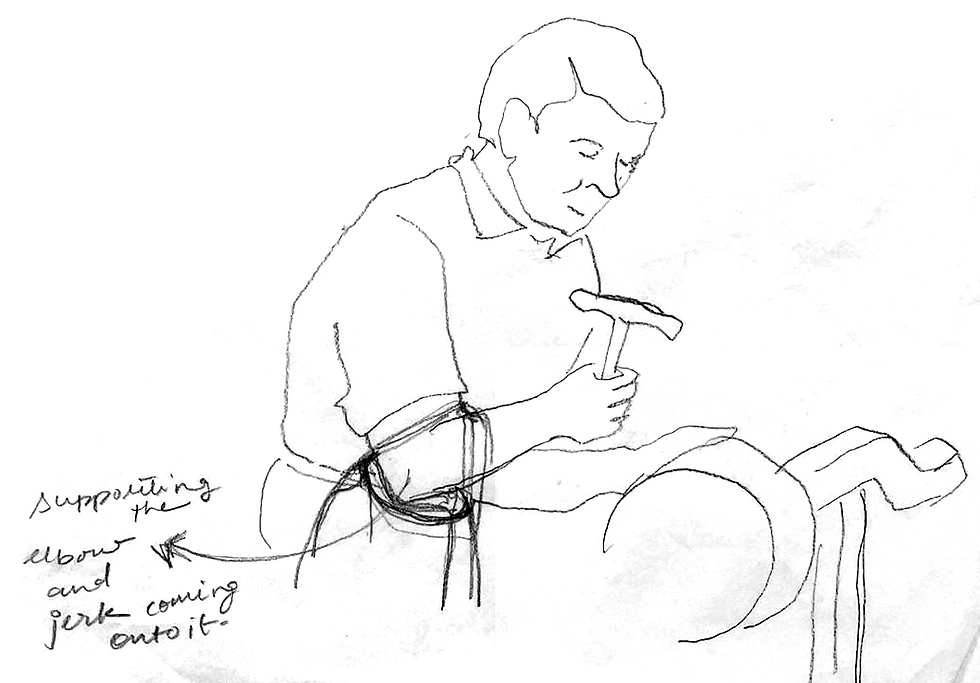

Awkward position of hands
There can be pain in the hands, if we increase the tool height
Material and Making cost high
PROBLEMS IDENTIFIED
Does not solve back and neck pain problem
Not economic for user
Adjustability is low
Material and Making cost high
PROBLEMS IDENTIFIED
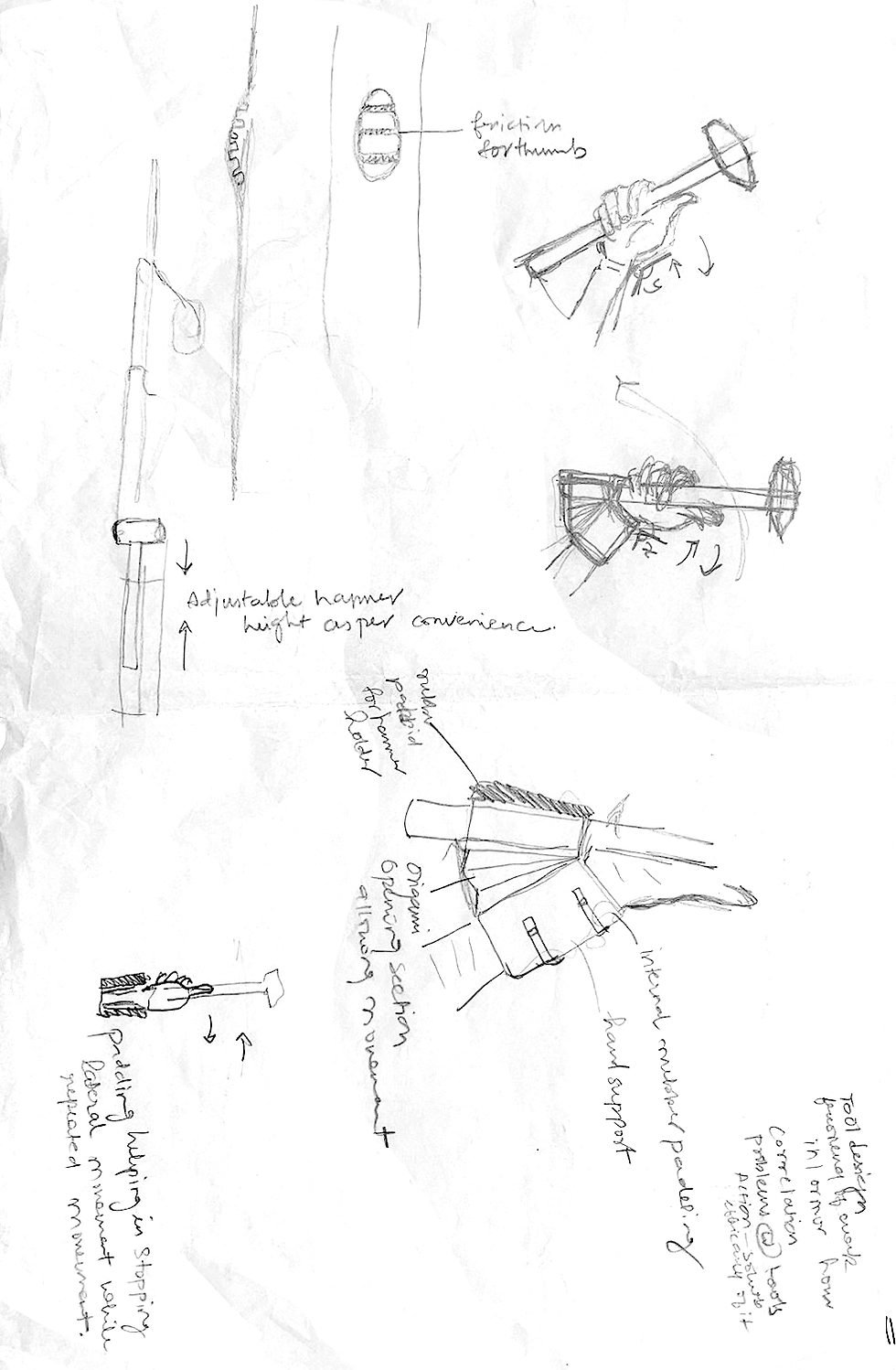
minimize strain on the hands, wrists, and arms
better control and stability
higher productivity and better quality craftsmanship.
Expensive for user
may feel uncomfortable to use new tool
Tool design will not solve the back and neck pain
Pros
Cons

Solution 3- Wrist band


Seat

PRODUCT: SEAT DESIGN - Initial Concept 1
Cons
Pros
Not economic for user
Adjustability is low
Material and Making cost high
Huge as per workspace
Does not include all user type(size)
superior comfort
optimal support to the back, hips, and thighs
durable and resilient

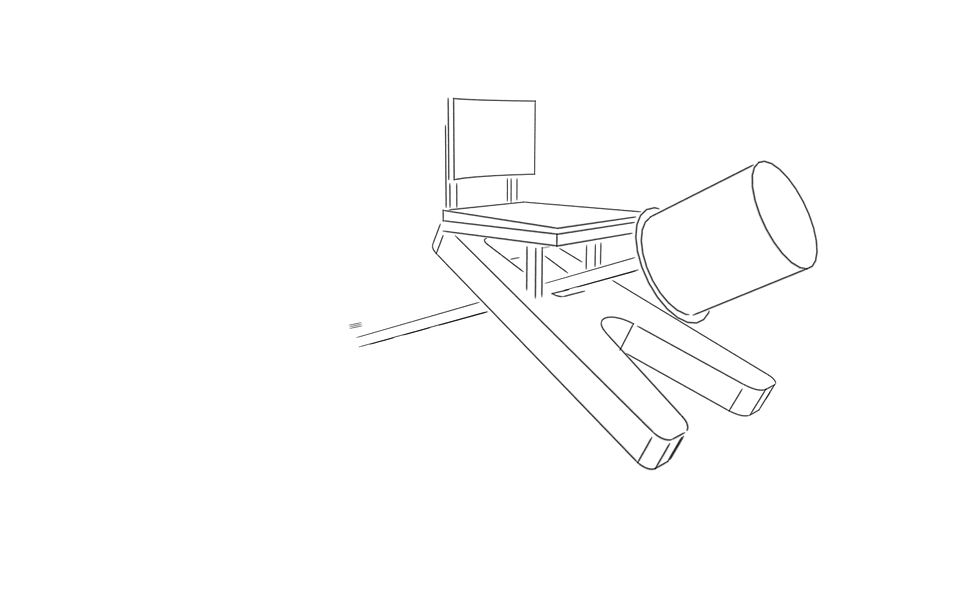
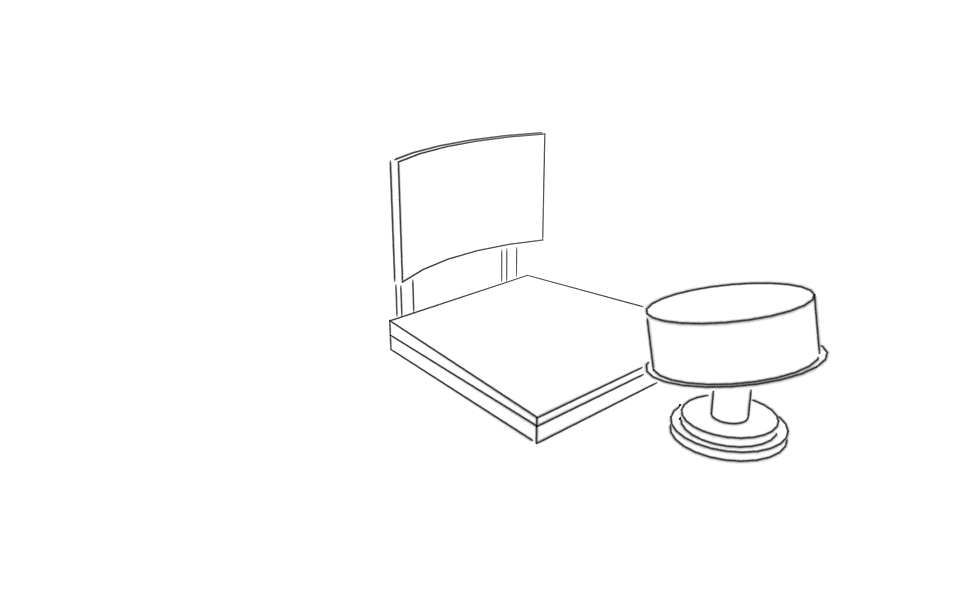

Final Design
The final seat design for coppersmiths enhances the traditional seat by adding features for better comfort and support while preserving its original style. It blends tradition with modern ergonomic improvements, providing a more comfortable and adaptable solution to address health concerns and improve working conditions.
The seat is designed to sit on khod as well as on floor for all types of coppersmith work
The angled support on bottom helps the seat sit firmly on the angled khod piece.
Iron rods stand behind to rest the back rest which will take the constant thrust felt while hammering`
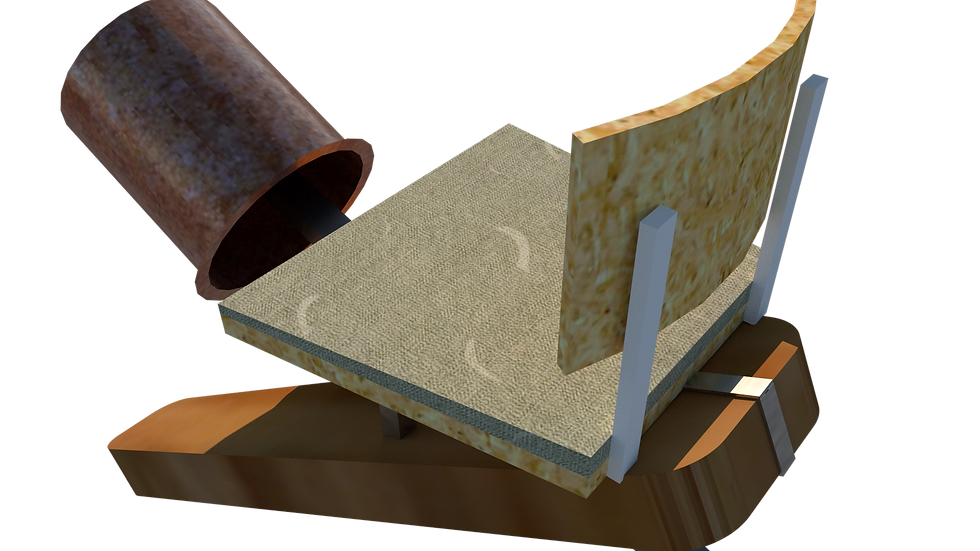
Iron rods stand behind to rest the back rest which will take the constant thrust felt while hammering`
Foldable bottom support to be able to use the seat on ground


Final Product
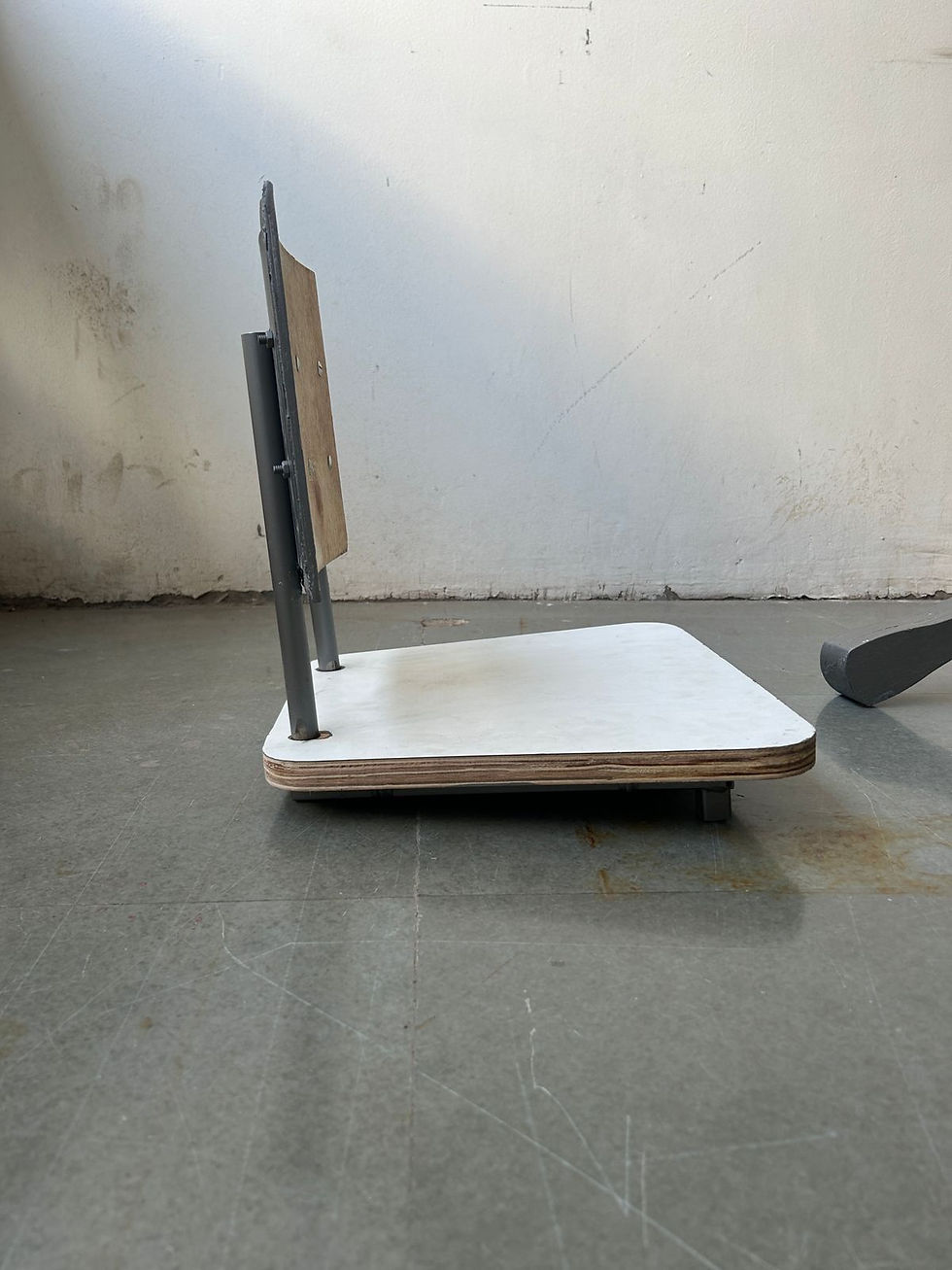



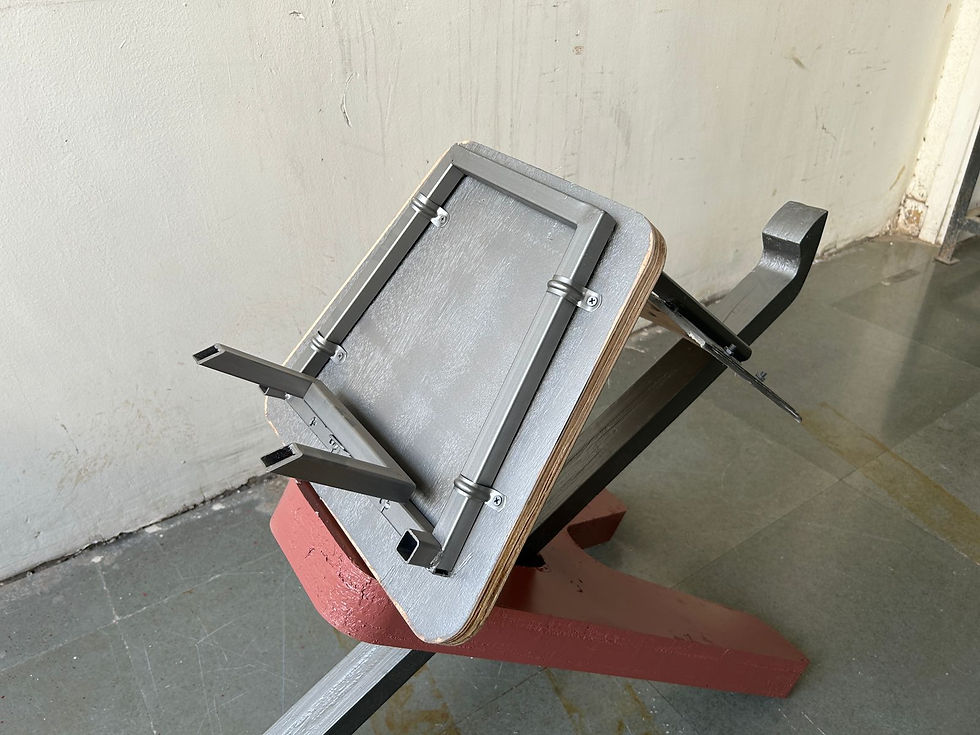

Future Scope for Ergonomic Design:
Key Learnings & Reflections
User-Centered Design: Direct interaction with the artisans highlighted the importance of immersing oneself in the users' environment to uncover real pain points. This approach ensured our solutions were not only practical but also culturally sensitive.
Balancing Tradition and Innovation: Designing ergonomically while preserving traditional craftsmanship was a challenge. This project taught me how to blend modern ergonomic solutions without disrupting the artisans' time-honored methods.
Data-Driven Decisions: Utilizing tools like REBA and WERA helped back our design choices with measurable data, and how it impacs the artisans’ health and productivity.
Empathy in Design: Collaborating closely with the coppersmiths reinforced the importance of empathy in the design process. Their insights were instrumental in refining the final solution.
Adjustable Features
Material Upgrades
Enhanced Durability
Incorporating Sustainable Materials